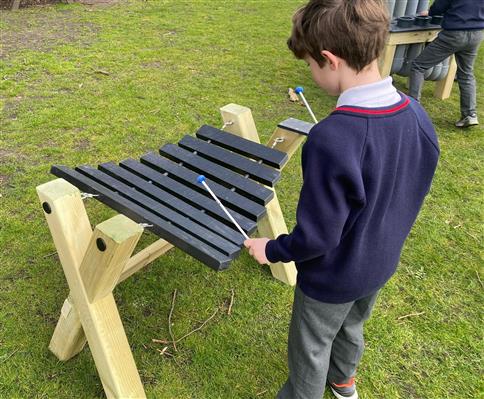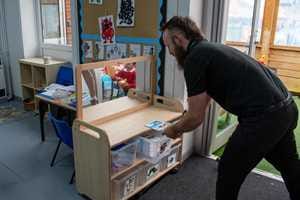
Company News
Taking Music Lessons Outdoors with Pentagon's new Outdoor Music Range!
“Music is a more potent instrument than any other for education, because rhythm and harmony find their way into the inward places of the soul.” – Plato
We have some exciting news! With innovation at the very heart of what we do, our incredibly talented Product Designer Ellen Jameson has been working hard (as always!) to extend our provision for outdoor learning through musical play.
With her background in design and engineering, Ellen has developed an outstanding new range of outdoor percussion instruments that - going the extra mile - includes pieces that are expertly tuned to a C Major scale. This vibrant new collection will enable schools to transform their outdoor learning environments into a model base for extraordinary music lessons, and much more besides.
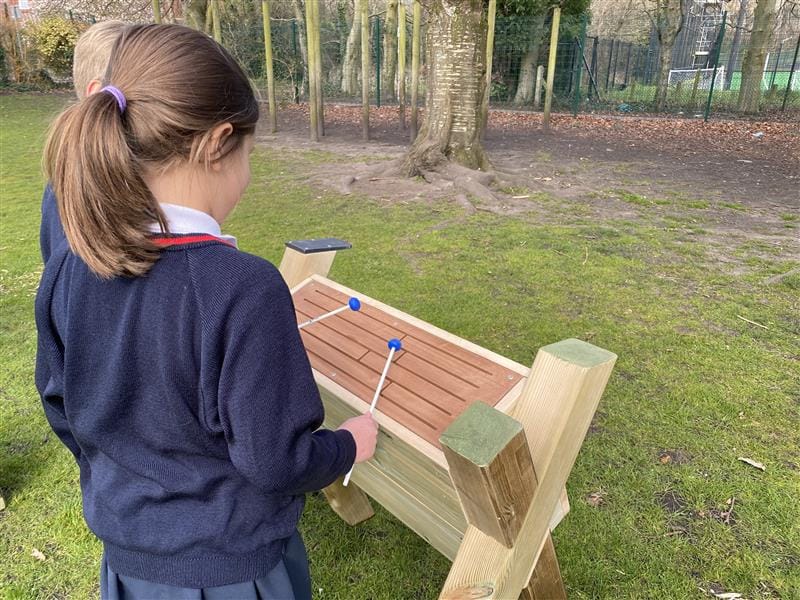
We’ve been busy in the workshop testing and refining each instrument down to the final note, and we think that they’re pitch perfect. We’re sure that you will too! So - drumsticks to the ready for a ‘drumroll please’ - our new Outdoor Musical Instruments are now ready to order from our online shop!
Whether outdoor musical provision is a new idea for your school, or you have an existing musical provision that you would like to develop further, we thought it might be helpful to introduce each instrument to you in a little more detail, and highlight exactly how they can be used to enrich children’s educational play experiences across the national curriculum.

It’s been said before: ‘music is a universal language that embodies one of the highest forms of creativity’. A child’s musical education goes far beyond attainment targets - to find a love of music can be life-enhancing, life-affirming, life-changing. Music inspires. It has the power alone to influence our mood, and whatever the subject matter, music has a way of capturing our attention and igniting all areas of our learning and continued development.
Good for the soul and good for the body too - a diverse musical education is very much a whole-child, life-enhancing physiological experience. Both listening to and making music boosts a child’s creativity, sustained concentration and self-confidence - opening up doors not just for aspiring musicians, but confident, rounded learners across the board.
Asking a child to listen to and identify different sounds, and different patterns of sound, is an excellent way of developing aural memory and helping to improve cognitive and auditory processing skills, particularly where a child has auditory processing difficulties.
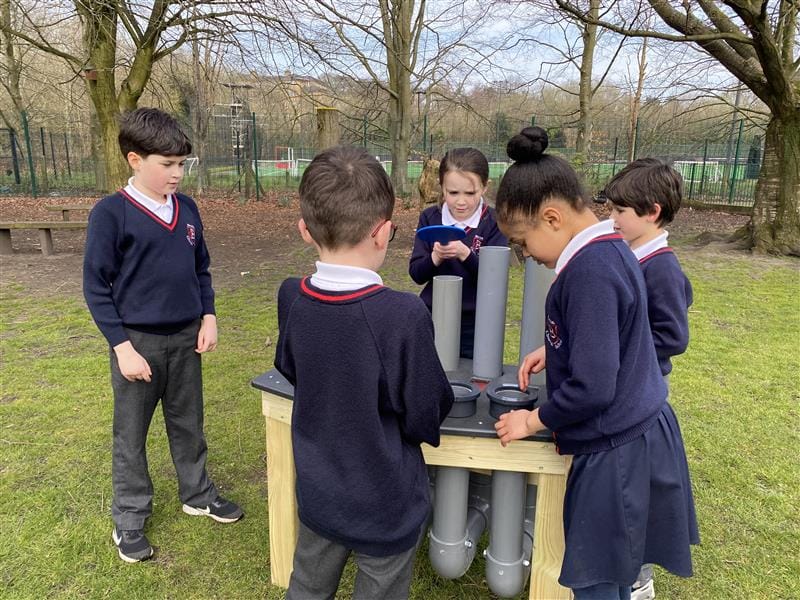
Giving a child opportunities to make music for themselves, playing any instrument regularly, can help to improve manual dexterity thanks to the fine motor skills and hand/eye coordination required.
And of course children can begin to enjoy music from a very early age - right from birth, or perhaps even before! Music doesn’t demand a formal learning environment, which is one of the many reasons why the outdoors is such a great place for EYFS/KS1 and KS2 musical teaching to introduce and develop some of the basic musical concepts - with a firm focus on fun!
There are plenty of sounds to discover outdoors - it’s here that children will find the inspiration, the space and the resources to experience a genuine freedom of musical expression. Being outdoors naturally encourages experimentation, flexibility, and the idea of ‘having a go’ without feeling as conspicuous as they might feel indoors.
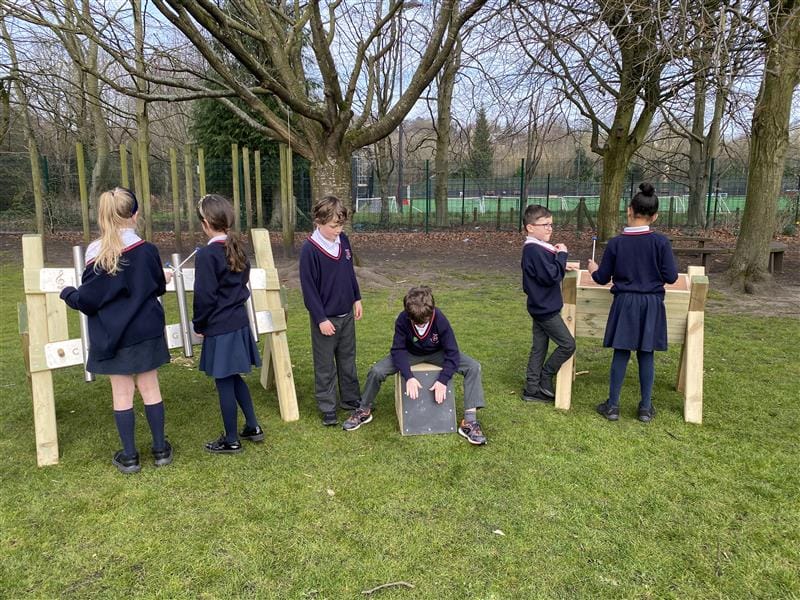
Our outdoor musical instruments are uniquely designed to survive the outdoor elements, as accessible learning resources for all children to take pleasure in. Each one is freestanding, so that teachers can easily move them around to suit their setup.
They can be well used for teaching in different and open-ended ways to enhance learning, supporting children in developing the characteristics of effective learning and allowing them to achieve their learning goals across the curriculum.
Through direct, hands-on experiences and their own music-making, children can perceive and understand how music is created, produced and communicated. A combination of outdoor musical instruments will help schools to promote an integrated approach to musical learning, where outdoor activities, singing and playing instruments, and exploring the interrelated dimensions of music, can be perfectly intertwined.
The interrelated dimensions of music are the essential building blocks at the centre of all musical learning. To demonstrate how each dimension of music can be explored and understood using our new instruments, we’ll reference them (in italics), with some essential musical vocabulary for primary learners, alongside each instrument that we’re excited to introduce to you!
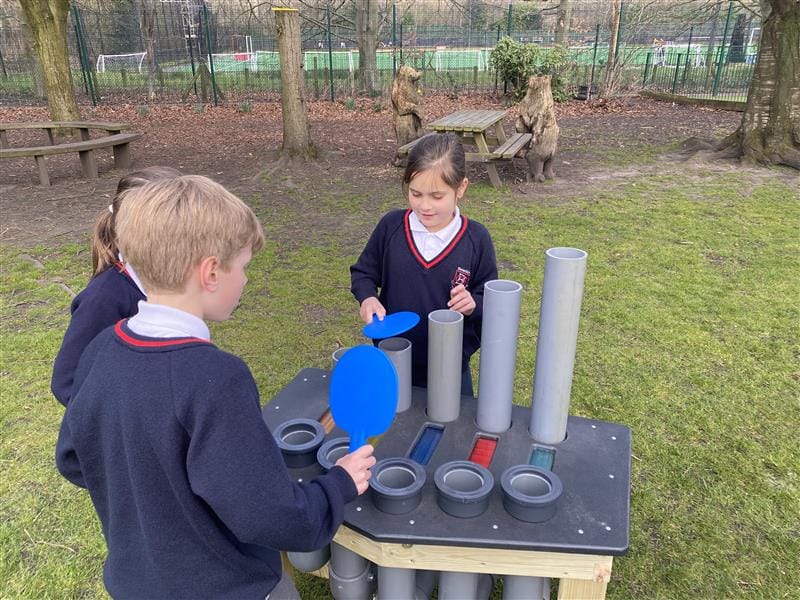
The Marimba
The Marimba is a wonderful resource for developing children’s understanding of the world, and their knowledge that different cultures have different ideas and traditions.
It’s a percussion instrument that is believed to be of ancient African origin, subsequently popularised in Central America. ‘La Marimba’ remains the national instrument and symbol of the rich cultural history of Guatemala, where traditional Marimba bands play a rhythmic Pulse (the regular heartbeat of the music; its steady beat that keeps going at the same speed for the duration of the piece) for Expression (the ability to identify and convey emotional content) to accompany dance.

Children love the Marimba for exploring expressive art and design through music, as they too create and dance to their own melodies.
Our freestanding Marimba is made from smooth sapele hardwood dowels, that are struck with small, rubber mallet beaters to create warm Melodic (tuneful) sounds. The longer dowels create lower notes, with more Resonance (deep, clear and full continuing sound) and lower-pitched Texture (the layers of sound that work together and make music interesting to listen to) than a xylophone, for example.
Product Spotlight
Children can hold a beater in either or each hand, using their developing fine motor control and hand-eye coordination to strike the keys and create sounds.
The Marimba is a unique instrument in that it can be played in many different ways and by a few children at the same time, developing social skills as they take turns and learn to work together to make something - in this case collaborative music!
When play has finished, our Marimba has a designated storage place for beaters so the children can learn about putting things away and taking care and ownership of items.

Freestanding Chimes
Metallophones have been used to make music across the world for many hundreds of years. A metallophone is essentially any musical instrument with which the sound is produced by striking pieces of metal with a varying Pitch (the quality which makes it possible to judge sounds as ‘higher’ and ‘lower’).
Our Freestanding Chimes are a beautiful example of a metallophone. They’re tuned to the Heptatonic Scale (a musical scale that has seven pitches, or tones, per octave) of C major, which is the first basic scale that everyone learns in music, containing the notes C, D, E, F, G, A, B C.
(1).JPG)
These notes are clearly engraved onto a traceable Stave (a set of five horizontal lines and four spaces representing different musical pitches) set behind each chime, along with the corresponding letters, to help teach Notation (the link between sound and symbol). This makes the Freestanding Chimes an ideal resource for enabling all children to learn to read music from a young age.
They’re great for STEM learning too - children can investigate and discover for themselves how the properties of each chime, the material, their length and their density, and the way in which they’re struck, changes the sound produced.
.jpg)
The Xylophone
A ‘wooden voice’ - the name of the xylophone originates from Ancient Greek, although it is a musical instrument in the percussion family which probably originated and evolved independently in Africa and Asia. Either way, it’s a great instrument to open up discussion with children around different cultures, languages and understanding the world!
Lessons using the Xylophone can offer deeply engaging and memorable ways to introduce the musical concept of Timbre (the perceived quality of the sound of music) while simultaneously supporting speech development and learning phonics. All instruments, including voices, have a certain sound quality.
Timbre distinguishes different types of sound production, such as human voice or instrument, or different types of instrument. Can your children recognise the differences? Can they use their own voices to make different musical/instrumental sounds?
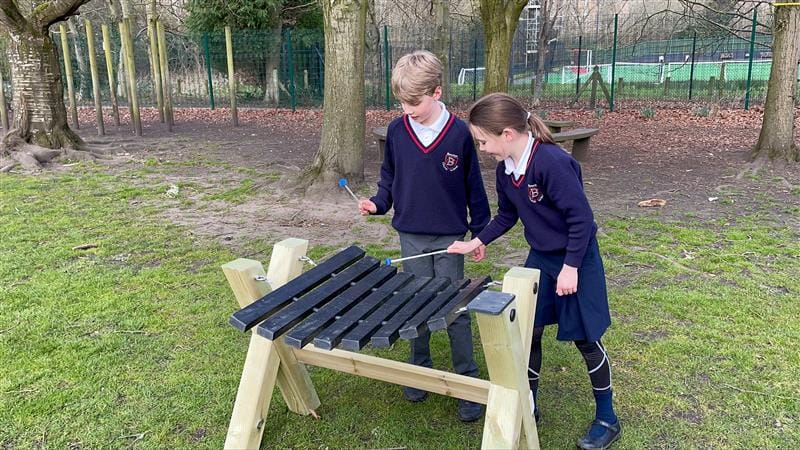
It has an open ended design to encourage groups of children to work together and develop their social skills as they learn Improvisation (the ability to spontaneously invent their own music).
By striking the planks and learning to use the beaters, children will naturally develop their fine and gross motor skills whilst discovering how force can impact the Dynamics (how loud or quiet the music is) of the tunes that they create. They will learn first-hand how planks of different lengths create different notes, and can delve into the mechanics of this as part of a group discussion.
Importantly, our outdoor Xylophone has been thoughtfully made from recycled planks, promoting discussion and demonstrating to children an example of what we can do to care for the environment.
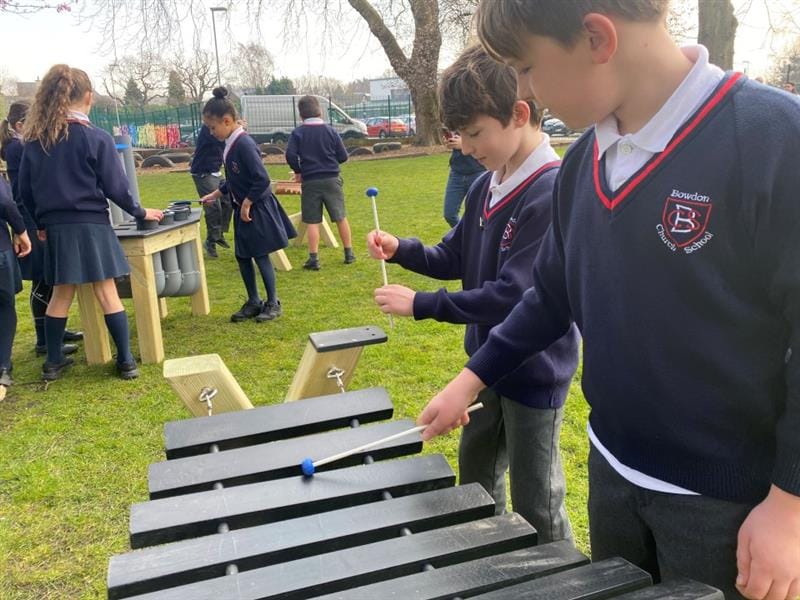
The Musical Triad
The Musical Triad is a uniquely shaped three-sided instrument that allows lots of children to play at once, bringing the Marimba, Chimes and Xylophone together! It’s a fantastically fun, eminently versatile and inventive resource for children to play and perform as an Ensemble (a group of musicians performing together).
Social interaction is a key ingredient to music and movement, and the Musical Triad presents not just opportunities for creative expression, but also for practising important social skills such as turn-taking and teamwork.
.jpg)
Listening plays a huge part in successful collaboration, and with the Musical Triad children are required to listen and respond to each other’s sounds to create a melody or rhythm, as well as expressing their own ideas - it’s a life skill!
The different sides of the Musical Triad present a great visual for demonstrating musical Structure (the concept that every piece of music has a structure e.g. an introduction, a verse, a chorus, and ending). Children can begin by using each side to represent one part of the structure, then layer sound from different sides together as their skills progress.
.jpg)
The Drum Seats
With a distinctive Afro-Cuban influence, our clever Drum Seats certainly provide an interesting alternative to your usual playground seating!
They’re designed for children to sit comfortably on the top and use their hands to create a tom-tom like sound - an exciting avenue for them to create their own music and produce short or resonant sounds, experimenting with Rhythm (how the music is divided into long and short sounds or patterns that happen over the pulse) and Tempo (the speed of the music).
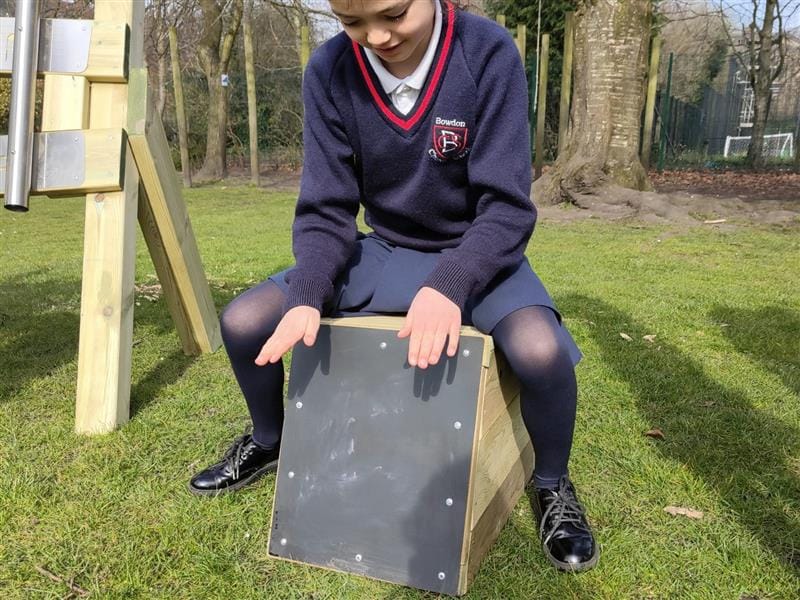
Move them around the playground for musical language development, physical literacy and storytelling with a difference - allowing children to set their own tone to a tale! They can invent, retell and adapt narratives, performing stories, songs, rhymes and raps with a beat - moving to the music - the floor is theirs!
We’ve even made the sides with chalkboard so there’s space for mark-making, noting down ideas or writing numbers on to support counting in time.

The Batonka
The Batonka is a hugely fun, sensory delight of an instrument!
It’s made from recyclable, durable, non-toxic ABS plastic pipes of different sizes, which children can strike using small paddles to produce a range of different sounds and pitches - another top resource for promoting hand-eye coordination and fine and gross motor skills.
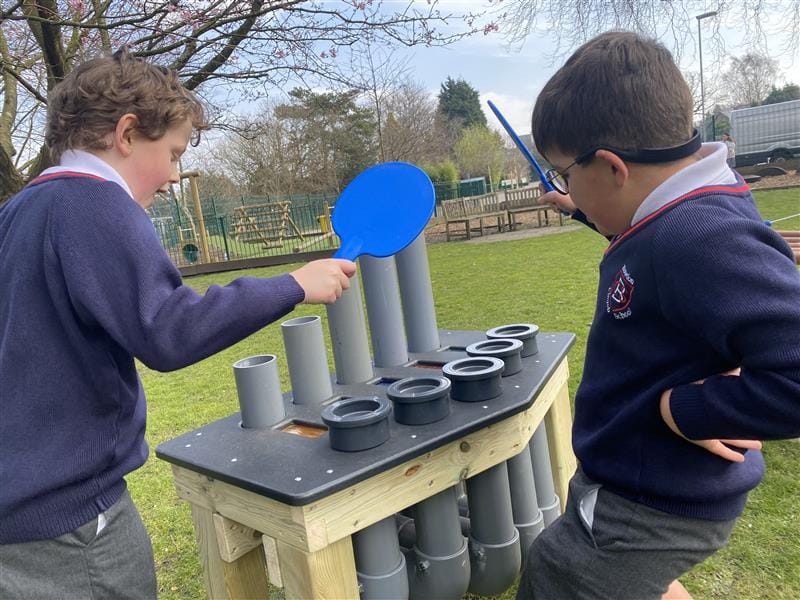
All of the pipes are removable at the base so they can be emptied if any debris gets inside them. This also allows the pipes to be filled on occasion with materials for experimentation, such as water or sand, so that children can discover how and why they influence the sound produced.
Cheerful coloured panels sit between each end of each tube to help with differentiation - children are encouraged to associate the colours with notes as they play with sound and learn to recognise pitch and musical patterns from a young age.
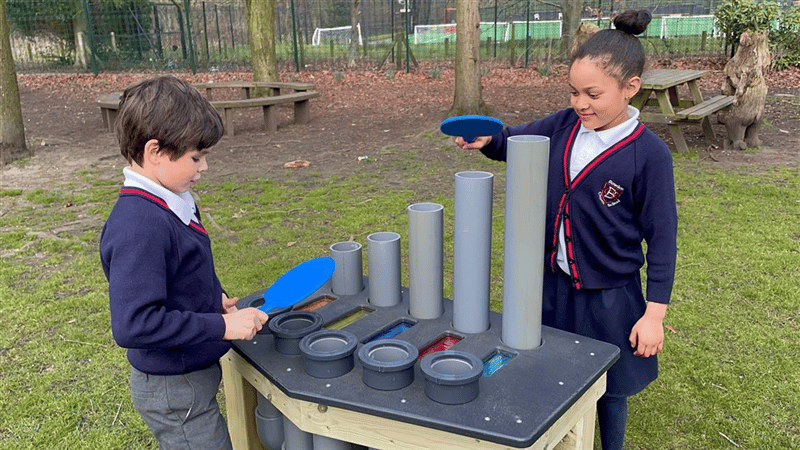
Ready to make some noise?! You can view each of our Outdoor Musical Instruments in action.
.jpg)


